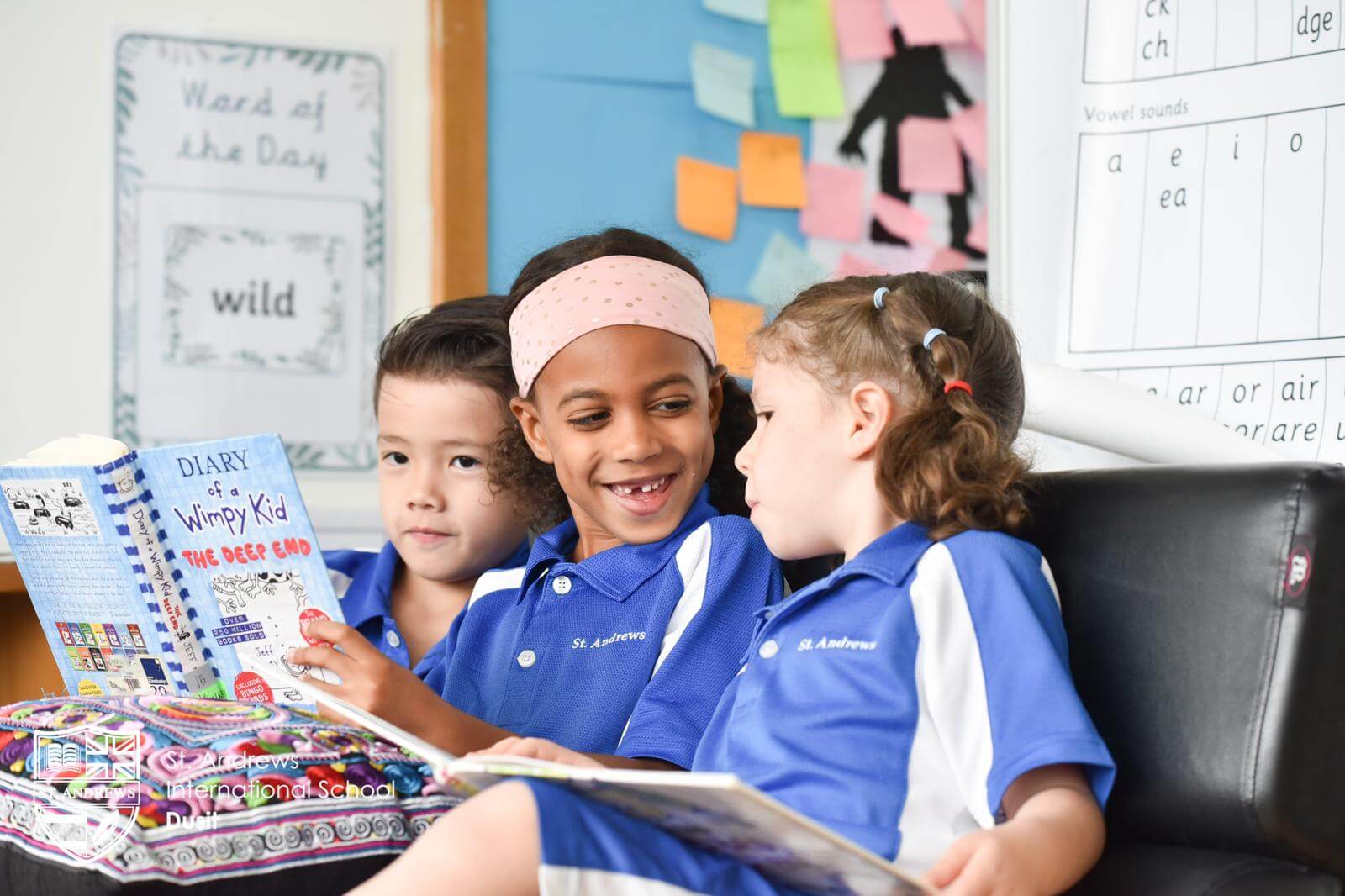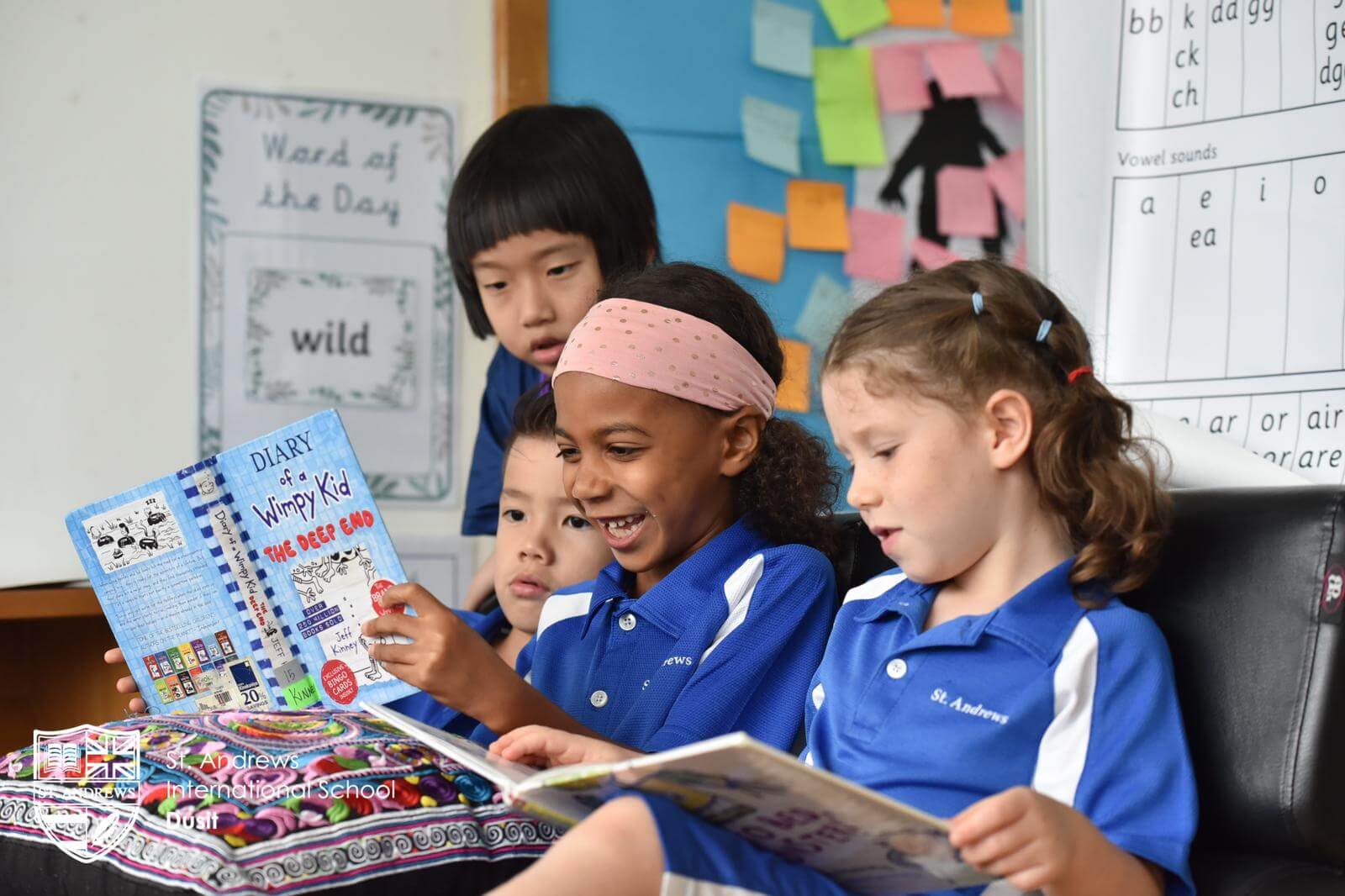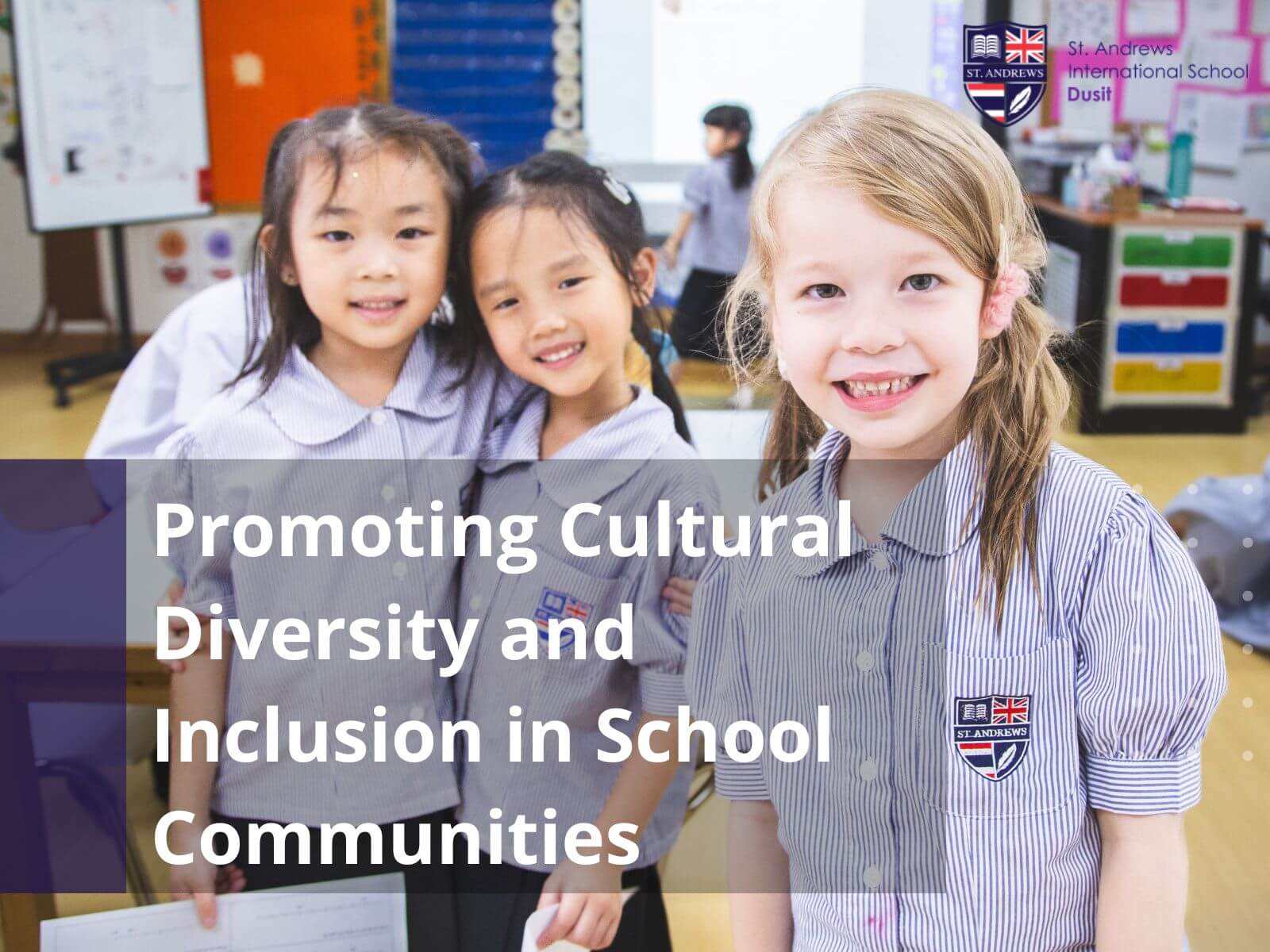Diversity is our strength—that is what we believe here at St. Andrews Dusit International School. As a primary school for children from Nursery to Year 6, our school strives to teach and promote diversity to all children in our institution who themselves come from diverse backgrounds.
It makes perfect sense since an international school is defined by its diversity. We are proud of the various cultures that we welcome into our institution, and we respect and embrace the diversity in their backgrounds, religions, and values.
We believe in fostering a mutual understanding among the young minds in St. Andrews Dusit about how diverse reality or the world truly is. A homogenous culture tends to stifle individuality and breeds tribalism among different clashing cultures.
There’s no better teacher of diversity and its benefits than experiencing it firsthand in an international school that’s designed to be diverse.
What are the Benefits of Diversity in St. Andrews Dusit?
It’s better for different cultures to live in harmony with one another with mutual respect and without needless tribalism. The children should view themselves as citizens of the world rather than just citizens of their own nation or country.
Promoting cultural diversity opens up your child’s perspective to a kaleidoscope of experiences they otherwise won’t have unless they become well-travelled adults in the future.
“Humans from different walks of life should learn to resolve their differences and diversity with mutual respect, understanding, inclusiveness, and camaraderie.” (Teacher Quote)
We should teach our children how to get over tribalism, discrimination, and xenophobia by allowing them to leave their own comfort zones and make friends with children from diverse backgrounds.
Teaching inclusion is simple to children. Discrimination and tribalism are actually learned behaviours rooting from homogenous or mono-cultural backgrounds.
By allowing our young learners to mingle with one another despite having different race, ethnicity, religion, language or socioeconomic status, they can avoid seeing people from unfamiliar cultures as “others” or “outsiders”.

Types of Cultural Diversity in the Classroom
Every child is unique. To promote cultural awareness and inclusion in school communities like St. Andrews Dusit, our teachers have made it a point to understand the different diversity types they might encounter in our international campus, which includes the following.
- Race: Someone’s skin colour can impact their experience in society greatly. It can even affect how they view others and themselves when engaging in classroom activities, even if it’s something as basic as differing appearances or group dynamics.
- Ethnicity: Ethnicity refers to the child’s nationality and culture. Ethnicity is sometimes mixed up with race, but it’s important to differentiate skin colour from ethnicity, because some people with the same skin colour can end up with different nationalities, world views, or cultural beliefs.
- Religion: We at St. Andrews wish to establish in our classrooms that everyone has different religious beliefs or lack thereof. This can in turn affect the children’s class participation in certain ways. They may react differently to lessons based on religion or they may not be able to attend during certain religious holidays.
- Language: While English is commonly used in international schools like St. Andrews Dusit, some kids might only have English as their second or even third language. Different children have different mother tongues. Accommodations should be available for those who speak English as a secondary or tertiary language.
- Socioeconomic Status: The socioeconomic status of the child can affect their classroom participation without any accommodations or adjustments. For example, computer or Internet access at home might not be available for certain kids. Teachers should have more awareness of the kids who might struggle due to lack of resources.
Developing a Broad Worldview in a Multicultural Setting
Normalising diversity will help avoid issues with racism, tribalism, xenophobia, stereotyping, and discrimination in the future through childhood familiarity, open-mindedness, and inclusiveness.
They can also learn things such as celebrations, traditions, food, slang, and customs that teach them that even though they differ in culture and skin colour, they have more in common with each other as part of the human race than they think.
Even though two friends don’t share the same aspects of their life or cultural traditions, they can respect each other the same way they want others to respect their own beliefs.
We believe the best way to promote cultural diversity and inclusion in our international school is encouraging international-mindedness or world-mindedness among children at a young age. They should understand they belong in a bigger community while retaining their uniqueness.
They can retain their identities as unique individuals with diverse backgrounds while respecting each other enough to live in harmony despite not being a homogenous group.
According to the International Baccalaureate (IB), this worldly perspective is a key trait in children, and this type of mindset allows them to see themselves as citizens of the world or part of the global community.

Promote Empathy, Kindness, and Respect with Inclusion
It’s important to instil in our children the sociological, ecological, technological, and cultural diversity of the world they live in instead of being left in a homogeneous, mono-cultural echo chamber or bubble.
The concepts of different races, ethnicities, languages, should be introduced to them along with inclusion to avoid future culture shocks and clashes.
The children themselves will bring in the diversity since they come from all walks of life and from all over the world. They can introduce to one another each other’s cultures and heritages through their diverse school community and inclusive environment.
They can instead view making friends with children from other “tribes” or “backgrounds” as similar to making friends with like-minded individuals from the same “tribe”.
They’re exposed to a multicultural melting pot from the start, so they view every child as belonging in one “tribe”—the tribe of the human race—while also respecting their unique cultures at the same time.
The Verdict
At St. Andrews Dusit, we think it’s important to teach kids about the reality of diversity, so they won’t be as surprised when they leave school and enter the real world. Diversity awareness enables them to coexist peacefully and succeed in their future endeavours together.
Additionally, it lets children see things from a variety of perspectives, preventing them from getting isolated by prejudice, bigotry, and tribalism as a result of living in an echo chamber.
Incidentally, St. Andrews International School Dusit falls under the purview of the Cognita School Group. As a major academic organisation, Cognita runs schools across the Americas, Asia, Europe, and other regions under its umbrella.
If you want to learn more about St. Andrews Dusit, you may schedule a school tour. You may also watch our personalised interactive virtual campus tour for more information about our international school in Bangkok.



